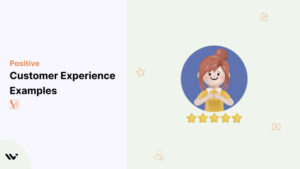You walk into a store, and an employee greets you by name, remembers your past purchases, and suggests something you might love.
Sounds like a dream, right? Not anymore!
Customer experience (CX) is no longer just a word; it’s the battleground where businesses win or lose.
This blog discusses the excellent customer experience examples to illustrate what differentiates market-leading brands.
A positive CX can turn a one-time buyer into a loyal brand ambassador, while a negative customer experience example above can send them running to the competition.
Watch out for the great examples of companies that are going above and beyond to delight their customers with the best customer experience examples!
Visitors leave your website without taking action?
They don’t trust your site or feel urgency to act. WiserNotify builds both, turning doubt into action & visitors into customers.

What Is Customer Experience?
Customer experience (CX) refers to all customer interactions and impressions of your brand, from awareness to post-purchase support.
Your website, social media presence, in-store experience, customer service, and product packaging are all touchpoints. CX aims to create a great customer experience, fostering positive emotions, satisfaction, and loyalty throughout the customer journey.
For example, you buy shoes online. The website is user-friendly, checkout is smooth, and the shoes arrive as promised. Later, you receive a discount on shoe care products. This seamless process reflects a great CX—easy shopping, quick delivery, and thoughtful follow-up.
What Is the Best Customer Experience?
There’s no formula for the best customer experience—it varies by industry, audience, and brand. However, some key factors consistently impact CX:
- Speed: Quick responses and resolutions.
- Consistency: Trust is built through uniform experiences across touchpoints.
- Convenience: Easy, time-saving interactions.
- Personalization: Tailored experiences that show you understand your customers.
- Friendliness: Warm, empathetic connections.
To truly stand out, you need more:
- Unforgettable: Unique, fun interactions.
- Proactive: Anticipate and exceed customer expectations.
- Empathetic: Address emotions and pain points.
- Transparent: Build trust through openness.
Understanding the Customer Journey
Understanding the customer journey is crucial to delivering exceptional customer experiences. It involves mapping out every touchpoint a customer has with your brand, from initial awareness to post-purchase support.
A customer journey map visually represents the customer’s experience across all touchpoints. It helps identify pain points, improvement opportunities, and innovation areas.
By mapping these touchpoints, you can ensure that each one is optimized to provide a positive experience.
Creating a customer journey map involves several steps:
- Identify Touchpoints: List all the points where customers interact with your brand.
- Gather Data: Use customer feedback, analytics, and other data sources to understand their experiences at each touchpoint.
- Analyze Pain Points: Identify areas where customers face challenges or frustrations.
- Design Solutions: Develop strategies to address these pain points and enhance the overall experience.
Understanding the customer journey can increase customer satisfaction, loyalty, and revenue growth.
Here’s a breakdown of different CX categories, with specific examples and actionable tips for you to implement:
Positive Customer Experience Examples
1. Sephora Beauty Insider Program
Sephora’s Beauty Insider program is an excellent example of a positive customer retention and customer experience strategy. It goes beyond offering discounts by having a tiered loyalty program that rewards customers for their behavior.

Members earn points for every purchase, which can be redeemed for deluxe samples, full-size products, or even money off their next purchase. Beauty Insiders also get birthday gifts, free shipping offers, and access to beauty classes and events.
Why it works
This program creates excellent value, community, and appreciation for loyal customers. The tiered system encourages continued behavior and provides a clear path to earning rewards. Birthday gifts and events add a personal touch that makes customers feel special.
Tip
Have a loyalty program that offers unique benefits beyond discounts. Consider what your target audience values most and create a program that speaks to that. This could include exclusive product launches, early access to sales, or personalized consultations with beauty experts.
Also See: How to Get More Beauty Salon Bookings Online in 2025
2. Warby Parker Home Try-On
Warby Parker knows how frustrating traditional eyewear shopping can be. Their Home Try-On program allows customers to try on five frames from their entire collection for free in the comfort of their home—no pressure of browsing in a store and no need to rush through trying different styles.

Why it works
Warby Parker removes a significant hurdle for potential customers. Trying on glasses online can be challenging, and the Home Try-On program removes the uncertainty. Customers can see how the frames look with their wardrobe and get feedback from friends and family before buying.
Tips
Have a try-before-you-buy – Options to reduce purchase anxiety and build trust.
Let more customers see and touch products in a no-pressure environment, and they’ll be more likely to buy.
Good Customer Experience Examples
3. Zappos Legendary CustZappos omer Service
Zappos is famous for its excellent customer experience and excellent service. Their reps are friendly, helpful, and empowered to go above and beyond to solve customer problems.
This can be anything from spending extra time on the phone to recommending the perfect shoe to overnight returns at no cost.

Why it’s a Good Customer Experience
- Friendliness and helpfulness: Zappos reps focus on building rapport and helping the customer.
- Empowerment: Reps can use their judgment and creativity to exceed expectations.
- Problem-solving focus: The goal is to find a solution that makes the customer happy, not just resolve the issue.
Tips
Allow your customer service team to resolve issues quickly and creatively, exceeding the expectations of dissatisfied customers and happy employees.
Investing in well-trained and empowered customer service reps can create an outstanding customer care experience that makes customers return for more.
Build trust & FOMO
Highlight real-time activities like reviews, sales & sign-ups.
4. IKEA’s Interactive Showrooms
IKEA stores are famous for their unique shopping experience, which goes beyond just browsing products on shelves.
They have interactive showrooms where customers can see how furniture looks in their homes. These showrooms often have predesigned room layouts that customers can play with and modify using digital tools.

Why it works
- Immersive: Showrooms allow customers to go beyond static product displays and see how furniture would work in their space.
- Engagement: Interacting with the displays keeps customers engaged and helps them decide.
- Decision fatigue: Seeing furniture in a room makes it easier to know what they need.
Tips: By making your physical store interactive, you can transform it from a place to shop to a place to learn, explore, and be inspired.
Personalized Customer Experience Examples
Remember, personalized customer experience (CX) is about tailoring interactions, recommendations, and marketing messages to individual customer needs and preferences. It’s about making your customers feel like you get them and their unique interests.
Here are a couple of examples, with visuals, to illustrate this:
5. Spotify Discover Weekly
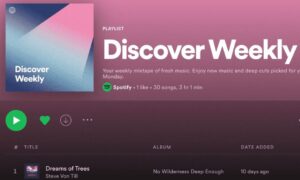
Imagine logging into Spotify on a Monday morning and being presented with a new playlist called “Discover Weekly.” You click on it and are presented with a selection of songs you’ve never heard before, but based on your listening habits, you know you’ll love them.
That’s the magic of Spotify’s Discover Weekly feature.
How it works
Spotify uses advanced machine learning to analyze your listening history. This includes the artists you listen to, the genres you like, and the tempo and mood of your chosen songs.
Based on this data, Spotify creates a personalized playlist with new music recommendations that are likely to interest you.
Tips: Use data and analytics to gain customer insights and personalize recommendations and offers. Like Spotify, you can analyze customer behavior and preferences to tailor your marketing messages, product suggestions, and overall user experience.
6. Netflix Curated Content
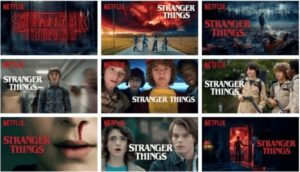
Think about the last time you logged into Netflix. Were you presented with a generic homepage or a personalized one with movie and show recommendations just for you? The answer is likely the latter. Netflix is another personalization master.
How it works
Like Spotify, Netflix uses advanced algorithms to analyze your viewing history. They track the movies and shows you watch, how much you watch them, and even the time of day you watch them.
Based on this data, Netflix curates a personalized homepage with content that matches your preferences.
Tips
Dynamically personalize your website or app content. By analyzing user behavior and preferences, you can show products, services, and content relevant to each customer. This will improve the user experience and increase conversions and sales.
By using these personalized CX strategies, you can get closer to your customers, increase their satisfaction, and keep them returning for more.
Build trust & FOMO
Highlight real-time activities like reviews, sales & sign-ups.
In-Store Customer Experience Examples
7. Apple Genius Bar
Description: This is what a great in-store customer experience looks like. Trained staff (called Geniuses) provide tech support for Apple devices, comfortable seating, and demo areas.

Why it Works
- Knowledgeable Staff: Geniuses are trained and certified to answer your questions.
- Personalized Service: Appointments mean focused troubleshooting and problem-solving for your device and needs.
Tip: Give your in-store staff product knowledge and training so they can answer questions, troubleshoot, and provide personalized service to each customer.
8. Disney Cast Member Interactions
Disney takes the in-store customer experience to a new level with its “Cast Members.” These sales associates and actors in Disney+ have a fantastic customer experience.
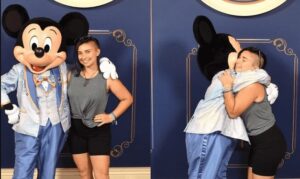
They aim to create magic for guests, make everyone feel special, and go above and beyond to make an unforgettable customer experience and every visit.
Why it Works
- Customer-Centric Culture: Disney prioritizes guest satisfaction and empowers employees to create positive interactions.
- Memorable Moments: Cast Members create unexpected moments of joy, like surprise character appearances or personalized greetings.
- Emotional Connection: It’s not just about transactions; it’s about creating an emotional connection between the guest and the brand.
- Exceeding Expectations: Cast Members consistently surprise and delight guests, leaving a lasting impression.
Tip: Create a company culture that prioritizes customer service. Train your staff to be friendly, helpful, and proactive in creating positive interactions.
Omnichannel Customer Experience Examples
9. Starbucks Mobile App
Starbucks has got omnichannel down to a science through its mobile app.
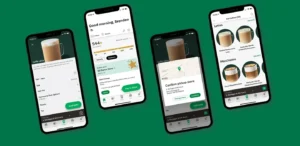
Why it Works
- Order and pay ahead: Skip the line and save time.
- Customize your order: Get exactly what you want.
- Earn and redeem rewards: The app is connected to the Starbucks Rewards program, which allows users to earn points and redeem them for free drinks or merchandise.
Find a store: The app will help you find the nearest Starbucks and give you directions and store info.
Tip: Offer omnichannel experiences so customers can consistently interact with your brand across multiple platforms (website, app, social media).
Build trust & FOMO
Highlight real-time activities like reviews, sales & sign-ups.
10. Walmart Online Grocery Pickup
Walmart’s online grocery pickup is a convenient and time-saving experience. You can:

Why it works
- Shop online: Browse and add groceries to your cart from a vast selection.
- Schedule pickup: Choose a time to pick up at your preferred Walmart store.
- Get order updates: You’ll get notifications about your order status when it’s ready for pickup.
- Easy in-store pickup: You can pick up your groceries from the designated pickup area when you arrive.
Tips
Connect your business model online and offline channels so customers have options.
Starbucks and Walmart have built loyalty and customer satisfaction by offering consistent experiences across multiple channels. These are omnichannel examples. Want to see more or go deeper into customer experience?
Unique Customer Experience Examples
11. M&M’s Personalized Chocolate Bars

M&M’s has taken a classic and made it personal and shareable. By letting customers design their candy bags and chocolate bars, M&M’s is tapping into the desire for individuality and customization.
Why it Works
- Personalization: Customers can choose colors, add photos, and write messages to make it theirs. This creates a sense of ownership and emotional connection.
- Shareability: The customized treats become gifts to be shared with loved ones, extending the brand experience beyond the initial purchase.
- Memorable experience: Creating a personalized M&M product is fun and interactive and leaves a lasting impression on the satisfied customer.
Tip: Offer product customization options so customers can personalize their purchases and connect with your brand.
12. Airbnb Experiences
Airbnb has gone beyond offering accommodation by creating a platform for unique experiences.
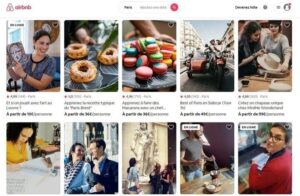
Why it works
Instead of just a place to stay, Airbnb connects travelers with locals who offer immersive activities like cooking classes, art workshops, and cultural tours.
- Authenticity: Airbnb Experiences offer a taste of local life and allow travelers to connect meaningfully with the culture.
- Customization: The range of experiences caters to different interests and preferences, so there’s something for everyone.
- Storytelling: These experiences often involve personal stories and insights from the hosts, making them memorable and enriching.
Tip: Create value-added experiences that surprise and engage customers beyond your core offerings, enhancing brand loyalty and differentiation.
Customer Experience Best Practices
A customer experience strategy should be centered around the customer’s needs and preferences. It should involve all departments and teams, from marketing to customer service, ensuring everyone is aligned in delivering a cohesive experience.
Here are some best practices for developing a successful customer experience strategy:
- Customer-Centric Culture: Foster a culture that prioritizes the customer in every decision. This involves training employees to understand and empathize with customers.
- Data-Driven Decisions: Use metrics such as Net Promoter Score (NPS), Customer Satisfaction (CSAT), and Customer Effort Score (CES) to measure success and identify areas for improvement.
- Cross-Department Collaboration: Ensure all departments work together to deliver a seamless experience. This includes sharing customer insights and aligning goals.
- Continuous Feedback and Iteration: Regularly gather customer feedback and use it to refine your strategy. This ensures that your approach remains practical and relevant.
Following these best practices can create a customer experience strategy that drives customer satisfaction and loyalty.
Leveraging Technology for Better Customer Experience
Technology plays a critical role in delivering exceptional customer experiences. By leveraging AI and data analytics, you can personalize interactions, streamline processes, and create a seamless experience across all touchpoints.
AI-powered chatbots, for example, can provide 24/7 support, answering common questions and freeing human agents to focus on more complex issues.
Data analytics can help you understand customer behavior, preferences, and pain points. Analyzing this data allows you to create targeted marketing campaigns and personalized offers that resonate with your audience.
Here are some ways to leverage technology for better customer experience:
- AI-Powered Support: Implement chatbots and virtual assistants to provide instant support and resolve common queries.
- Personalized Marketing: Use data analytics to understand customer preferences and tailor your marketing messages accordingly.
- Predictive Analytics: Utilize machine learning to predict customer behavior and take proactive measures to enhance satisfaction.
- Seamless Integration: Ensure all digital touchpoints are integrated, providing a consistent channel experience.
Leveraging technology can create an efficient and effective customer experience, driving loyalty and revenue growth.
Conclusion
Various CX strategies, from personalization and omnichannel to creating in-store moments. Examples like Sephora’s Beauty Insider program and Spotify’s Discover Weekly show how to tailor interactions to individual needs.
Companies like Starbucks and Walmart have mastered omnichannel for a seamless experience. Unique experiences like M&M’s personalized chocolate bars and Airbnb Experiences show how businesses can stand out.
By using customer experience, for example, prioritizing CX, you attract loyal customers who become brand ambassadors. Happy customers return, tell others, and drive business. So, focus on the positive moments along the customer journey and watch your brand grow.

